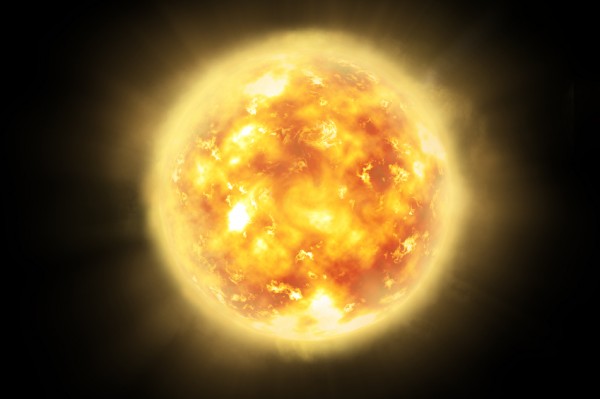
"The discovery of Rossby-like waves on the Sun could be important for the prediction of solar storms, the main drivers of space weather effects on Earth. Bad weather in space can hinder or damage satellite operations, and communication and navigation systems, as well as cause power-grid outages leading to tremendous socioeconomic losses. Estimates put the cost of space weather hazards at $10 billion per year," said Ilia Roussev, program director in NSF's Division of Atmospheric and Geospace Sciences.
Scientists at the National Center for Atmospheric Research (NCAR) define Rossby waves as large-scale planetary waves associated with jet stream trails and low- and high-pressure formations, which in turn play a significant role in local weather events on Earth. These waves develop in rotating fluids such as in the oceans and the atmosphere. The existence of Rossby-like waves should not come as a surprise because the Sun rotates, and because it is mostly made of plasma that in some ways act like a magnetized ocean, said NCAR scientist and lead author Scott McIntosh.
"The discovery of magnetised Rossby waves on the Sun offers the tantalising possibility that we can predict space weather much further in advance. Just like predicting weather on earth the global perspective on the sun is absolutely critical. Without that there is just too much guess work involved," said McIntosh.
The findings of the innovative study were published in the journal Nature Astronomy.
How Earth-like waves were seen on the Sun's surface
Researchers have previously identified the presence of Rossby waves on Earth by evaluating different satellite angles in space. Scientists had previously inferred that the Sun could host Rossby-like waves, but detecting planetary waves on the Sun's surface proved more difficult as experts were only able to study the Sun using the viewpoint from Earth's direction. However, researchers successfully examined the Sun's surface using data from NASA's Solar Dynamics Observatory and NASA's Solar Terrestrial Relations Observatory (STEREO) mission, which included two spacecraft that orbited the Sun. This trio of satellites collected data and images of the Sun's surface between 2011 to 2014.
The research team used the data gathered to identify and monitor coronal bright points -- small bright features scattered on the Sun's surface -- and subsequently track motions within the deeper parts of the Sun's atmosphere. The scientists also used data from the Hovmöller diagrams, a diagnostic tool designed to emphasize the role of waves on the Earth's atmosphere. An analysis of the combined data revealed that cohesive bands of magnetized activity propagated slowly across the solar surface. This mechanism was the same as Rossby waves found on earth, researchers said.
The results may have implications in the study of various solar phenomena such as the development of sunspots, their lifetimes, and the origin of the Sun's 11-year solar cycle, researchers said. The findings may also shed light on the existence of coronal mass ejections, researchers added. McIntosh stresses the results can help the scientific community better predict the Sun's behavior.
Still, it is important to gain a better understanding of the waves and their patterns in order to advance science's current predictive capacities. Doing this would require another 360-degree view of the Sun, said McIntosh. "To connect the local scale with the global scale, we need to expand our view. We need a constellation of spacecraft that circle the Sun and monitor the evolution of its global magnetic field," McIntosh added.
Read more news about space weather and the sun at Space.news.
Sources:
Please contact us for more information.






















